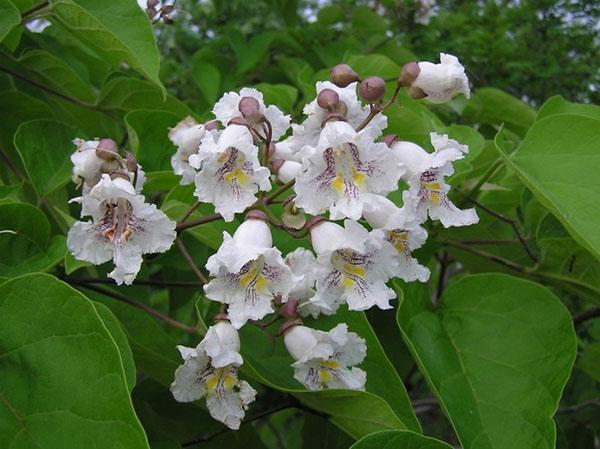Life of the southern catalpa tree in temperate latitudes
 In the middle lane, where summers are hot and winters are cold down to -30˚C, the amazing catalpa feels like home. This tree is beautiful from crown to roots. A spherical dome, large leaves, original blooms and fancy pods serve as an amazing garden decor. Whole alleys are created from woody plants, or a variety is planted in deep solitude. It does not require special care.
In the middle lane, where summers are hot and winters are cold down to -30˚C, the amazing catalpa feels like home. This tree is beautiful from crown to roots. A spherical dome, large leaves, original blooms and fancy pods serve as an amazing garden decor. Whole alleys are created from woody plants, or a variety is planted in deep solitude. It does not require special care.
On the eighth day
In some nationalities, children are given names on the eighth day. In the case of the catalpa, it was called by different nationalities, starting from their mentality and imagination. Therefore, traveling around the world, you can find the following aliases:
- Monkey. When ripe, the pods (20 cm long) take on a dark brown hue. In the dense foliage of the tree, they perfectly camouflage themselves and it seems that a whole family of monkeys is sitting there.
- Cigar or macaroni. So they call her in her native places.
- Elephant. The leaves are heart-shaped, like those of lilacs, only several times larger. Therefore, to many they resemble the ears of elephants.
- Catalpa “Magnolievidnaya”, and another variety “Magnolia”. Botanical names of the culture.
In each locality, they use a name that is closer to their liking. The West Indies and the Caribbean Islands (northern regions of America) are considered the birthplace of the southern "beauty".
The word "catalpa" comes from an ancient Indian tribe. They considered it a sacred symbol that indicated the birth of a boy or girl.
Exotic landscape decor

- an amazing contrast between maroon branches and light green leaves;
- fragrant white blooms with leopard ripples inside;
- refined pods and glossy seeds;
- large heart-shaped deciduous plates.
To form the crown, the branches should be cut. At the same time, you should not be afraid, because the next year several stepchildren grow from one cut at once. In dry weather, the near-stem area is watered with a sufficient amount of liquid.
Fertilizer is applied according to the standard scheme. In the spring season, nitrogen-containing top dressing is applied, and in the summer - a mineral complex.
It was noted that with proper care, the tree adds up to 100 cm of growth per year. Catalpa blooms in June. Such decor will make the garden much grander and richer.